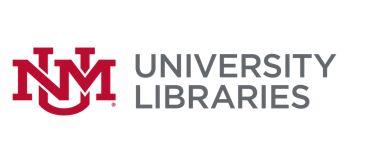WASHINGTON – Today, U.S. Senator Tom Udall (D-N.M.) submitted testimony to the Senate Energy and Natural Resources Subcommittee on Public Lands, Forests, and Mining hearing on the Chaco Cultural Heritage Protection Act (S. 2907), a bill he introduced with U.S. Senator Martin Heinrich (D-N.M.) to ensure the protection of culturally important areas nearby Chaco Culture National Historical Park.
Udall’s bill would prevent any future leasing or development of minerals owned by the U.S. government on lands in a 10-mile buffer region surrounding the park, which includes many sites that are sacred and culturally important to the Pueblos and Navajo Nation. The legislation is supported by the president of the Navajo Nation, the All Pueblo Council of Governors, New Mexico Wilderness Alliance, the Wilderness Society, and Southwest Native Cultures.
The Committee’s legislative hearing is an important step toward advancement of the bill and permanent protection of some of the most critical parts of the Chaco area. For many years the Bureau of Land Management (BLM) in New Mexico voluntarily honored the 10-mile buffer area. But the Trump administration has changed that policy, and recently proposed new federal oil and gas leases in the area — making this legislation an urgent priority to maintain that minimum level of protection while further resource management planning continues over a broader area.
The full text of Senator Udall’s statement is below.
Chairman Murkowski, Ranking Member Cantwell, and members of the committee -- thank you for the opportunity to speak in favor of the Chaco Cultural Heritage Area Protection Act, that Senator Heinrich and I introduced. S. 2907 would withdraw from future development minerals owned by the federal government located within an approximate 10-mile radius of the boundaries of Chaco Culture National Historical Park.
The Chaco Canyon area is known around the world as the nerve center of a culture that inhabited the Four Corners area for 2,000 years. This culture reached astounding architectural, social organization, and economic heights for 300 years -- between 850 and 1150 A.D. They constructed a network of roads spread in all directions, and trade relations extended far south into what is today southern Mexico. The Chacoan people were master builders and engineers -- constructing over 150 “great houses” – with hundreds of rooms and kivas -- connected by roads throughout the region. The more than 4,000 archeological sites have yielded over 1.5 million artifacts. The remains of these sites stand today – and are magnificent. This culture represents one of our nation’s greatest pre-Colombian civilizations.
Chaco has been a UNESCO World Heritage site since 1987 -- one of only 22 such sites in the U.S.
Many modern-day Pueblos and Tribes in the Four Corners area trace their ancestry to the Chacoan people and share a cultural affiliation with this ancient culture. They hold as sacred the starkly beautiful land and the cultural sites and artifacts within the area.
However, not all the critically important sites and artifacts lie squarely within the precise boundaries of the National Park -- making protection of the area surrounding the National Park imperative. This bill will protect sites recognized by UNESCO for their outstanding values but which currently lack federal protection. This includes, for example, Pierre’s site, dating from the 1100’s -- an archaeological complex with rooms, kivas, lookouts, and signaling locations on top of small mesas.
By working with Navajo Nation leadership, the All Pueblos Council of Governors, and various other stakeholders – the bill before you crafts a careful balance between cultural protection and existing rights.
This legislation would only withdraw from future development minerals owned by the U.S. government, under approximately 316,000 subsurface acres. The bill would not affect existing federal leases nor would it impact minerals owned by private individuals, the state, or tribes. The bill does not restrict other types of infrastructure development, such as constructing roads, power and water lines, and buildings -- necessary for local communities to grow.
The president of the Navajo Nation, the All Pueblo Council of Governors, the Southwest Native Cultures, Archeology Southwest, and many New Mexico conservation groups all support our bill.
The bill heeds the call from the National Congress of American Indians and the Dine Medicine Men’s Association to protect the Greater Chaco Canyon Region from development.
S. 2907 grew from community-based work over the past number of years. Residents in the area sought greater input into Bureau of Land Management decisions on development around their communities to protect the air, water, and land where the live and work. Pueblos and tribes wanted the meaningful consultation they are owed by the federal government.
In 2015, I invited then-Deputy Secretary of the Interior, Mike Connor, to visit the Chaco area. He took me up on that invitation, and together, we toured the area and met with stakeholders. Afterwards, the Deputy Secretary initiated the first-ever joint BLM-Bureau of Indian Affairs management planning process. A draft plan for Chaco National Park and the surrounding area is to be issued soon. I hope the draft reflects the views and history of tribal members who trace their ancestry in this region, as well as the concerns of communities nearby.
As for what we can do in Congress: The Chaco Area Cultural Heritage Protection Act will protect critical cultural resources before they are lost.
This protection is important to my state, our Pueblos and Tribes, our nation, and the international community.
I look forward to continuing to engage with Tribes, surrounding communities, and other stakeholders and to working with members of this Committee to protect this area for generations to come. Thank you for your consideration of this important conservation measure.

